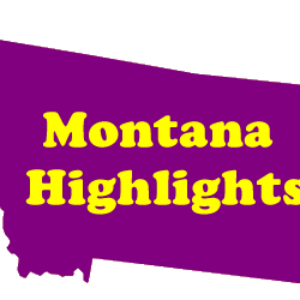By Evelyn Pyburn
If it seems that there have been fewer wildland fires in southeastern Montana, over the past few years, that is indeed the case. And, the reason could be the results of a new approach to firefighting that is being explored by the Montana Department of Natural Resources and Conservation (DNRC). It’s an idea devised by Derek Yeager, DNRC Southern Area Fire Program Manager and Montana Fire Warden.
Formerly a member of “hot shot crews” himself, after the devastating fire season of 2012, Yeager started thinking “Something has to change. We have to do it better.”
2012 was a particularly bad fire year. The Southern Area experienced over 1,000 wildland fires exceeding the 5-year average of 704 a year. The year was dry, with lots of ignition sources, and resources were slim. . Large fires burned homes, property, natural resources like pasture land, destroyed fences, and forced people to evacuate, and others lost all they had.
Said Yeager, “ We were dealing with 1,000+ acre fires literally every other day, sometimes daily. Volunteers were on fires daily, sometimes for multiple days straight. The costs of fighting those fires was particularly troublesome to me. Being the local guy, I knew of fire departments who were engaging fires. I saw their efforts. I went out and lived it with them and gained an appreciation and respect and understanding of what they were experiencing. I also recognized the value in applying as much common sense to this situation as could be.
“The idea to redirect our focus and commit funding and time and energy into increasing the capacity of local fire departments to respond fast and heavy, to hit fires small, to keep them small was the product of simple common sense, and in recognition that the wildland fire system abroad, while purposeful and powerful in many ways, has a finite capacity for the number of large fires it can staff.”
In analyzing the situation and, most of all, in talking to all the factions involved –Yeager came up with an idea, which, as Southern Area Fire Program Manager with oversight of seven counties, he has been able to try out in a pilot program, beginning small in the fall of 2015 in Yellowstone County.
Calling the new strategy a really big deal, Yellowstone County Commissioner John Ostlund said that he is proud that Yellowstone County has been able to serve as its proving ground. The new approach in dealing with fires is going to have major impact across the country, believes Ostlund.
“It has been enormously successful,” said Ostlund, “It is saving millions of dollar in firefighting costs, and saving in lost property, injuries and lives.”
At the base of Yeager’s idea is to get resources onto a fire as soon as possible. Instead of hours or even days, his goal is to have resources on a fire within minutes.
The approach seems to be working. After a number of years in which major fires would routinely rage through the region in late summer and early fall, filling skies with smoke and ash, and costing hundreds of millions of dollars to battle, Yellowstone County and surrounding areas haven’t seen a major fire in over three years. And, the fires that have occurred have been under a hundred acres.
Yeager emphasized that simply communicating – having discussions with the various factions involved with firefighting, has been key to developing and implementing the program. “There are so many different levels of government agencies involved, and while all have the same interest, they couldn’t come together in a way that kept fires small,” he said.
As a state agency, the DNRC maintains an operating agreement with the BLM, USFS, NPS, USFWS, BIA, and numerous other states, which allow them to trade and utilize each other’s resources, with each paying the costs associated with using the resource.
Simply by talking with all the many individuals and agencies, Yeager created “buy-in,” to “give it a try.” Continuing that process of getting “buy in” will be vital in advancing the approach. The program is in its “infancy” characterized Yeager, “but it is starting to get attention.”
According to Commissioner Ostlund, explaining how the program works will be part of the agenda of the next statewide meeting of the Montana Association of Counties, where “for the first time” he expects to get “buy-in” from most of the county commissioners “who are excited about being able to better protect landowners.”
Almost all of the area fire districts are participating in the program, although some districts are too small or face other barriers to participation.
Last year, had the largest participation, involving 400 volunteer fire fighters at 31 of 54 fire departments throughout the seven counties, including those in Yellowstone County, such as Worden, Shepherd, Lockwood, etc.
According to Yellowstone County’s Disaster and Emergency Coordinator and Fire Warden, KC Williams, Yellowstone County’s fire chiefs are excited about the program. He added, that although Yellowstone County’s fire chiefs and agencies always worked well together – and although he hasn’t been long on the job – as the plan has been implemented he has witnessed even greater coordination and better communication among the local factions.
Under the new program, no more waiting after a fire starts to see if it becomes large enough to justify greater assistance, which has been the strategy of the past. Now, resources are put into place in advance. The results have been that rather than taking days to get resources to a fire, they now are there in a matter of minutes, while it is still a small fire.
The approach has made all the difference in the world.
Not only is it more effective, it is less expensive and it is a boon to local fire departments. It supports the volunteer fire fighters, bearing in mind, says Yeager, volunteer fire fighters are at the core of success in all firefighting efforts.
The new plan serves to support local fire departments through an agreement between them and DNRC, which places DNRC fire fighters on duty at local fire stations under the supervision of local fire chiefs. The fire fighters are local volunteers, who become employed by DNRC, throughout the core fire season.
In the past, after a fire became large enough to be deemed qualifying, fire fighters and equipment from elsewhere in the country would be brought into the area to help fight it. Transporting them to the fire site would take critical hours and perhaps days – with the fire burning and expanding all the while. Once they arrived, the fire fighters invariably were unfamiliar with the area, with its culture and priorities, and with the local people with whom they had to work. The cost of transporting, housing and feeding fire fighters contributed greatly to the cost of firefighting.
Under the new program not only are local departments reinforced with the addition of the state-paid fire fighters, the fire fighters are local people, emotionally attached to the area’s well-being, familiar with the area and with the people and agencies with which they have to work.
The arrangement also helps local fire departments with the common dilemma of having to send their own fire fighters to fight wildland fires, elsewhere, for what is often a matter of days or even weeks – leaving little back up to provide protection for the local community.
While the DNRC fire fighters are on-duty they perform duties related to being successful in performing “rapid and aggressive initial attacks,” including training, maintaining equipment, and checking out lightning strikes.
The wages the volunteers receive improves their ability to be available. Most volunteers are usually dependent on other jobs, which they can’t afford to leave for extended periods to help fight fire, but being paid by DNRC not only makes that a greater possibility, but becomes an incentive for others to serve as volunteers.
The idea of sharing resources with local fire departments is not new for the DNRC. For some time now they have loaned local departments fire trucks in order to have the equipment available in locations with potential fire risk. Across the state DNRC has 75 fire trucks on loan to local stations under cooperative agreements – eight of those are located at fire districts in Yellowstone County.
Yeager’s program also has in place, in advance, many other processes, permissions and contractual arrangements required in dealing with firefighting, which before were not dealt with until a fire had grown large. Previously, a fire chief would call for help and then physically have to go through a required check list before anyone would give assistance. Getting through that check list could take from 24 to 72 hours, said Yeager. “That meant that meaningful help would not happen.”
The data shows that the new approach has a 8-1 benefit ratio, says Yeager. That means it costs about 1/8 of that of fighting a raging wildland fire.
While the number of reported fires has not changed – about 800 fires per year – “We don’t have any large fires,” said Yeager.
Although July through September is the core fire season, fires happen year round. They are more prevalent when there is no snow cover. For example last weekend, before it snowed, there were over a dozen wildland fires reported within a 48 hour period. So, the DNRC plans for fire occurrence during all 12 months of the year.



